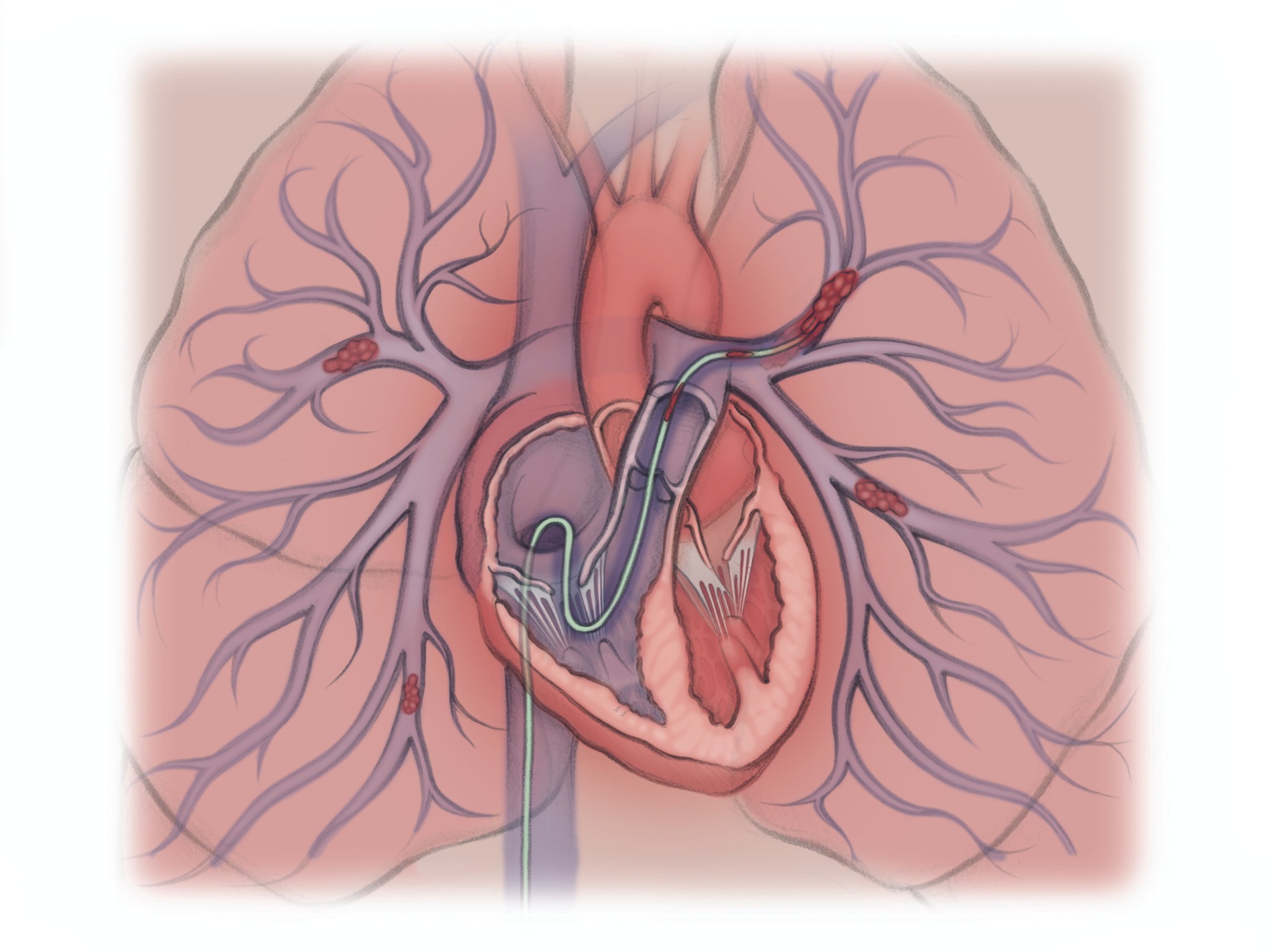PE Thrombectomy / Thrombolysis
A treatment to remove blood clots from the lungs
Español
What is a PE?
A pulmonary embolism (PE) is a blood clot in the blood vessels going to the lungs. A PE prevents blood from reaching the lungs. Smaller clots can cause shortness of breath and chest pain. Larger clots can cause heart failure and even death.
PEs come from blood clots that form in the deep veins of the limbs or pelvis. This type of clot is called a deep vein thrombosis, or DVT. These clots can get carried by the blood to the lungs, where they become a PE.
How is PE treated?
Most PEs and DVTs can be treated with blood thinners to prevent new clots from forming while the body dissolves the PE on its own over time. However, this may not be fast enough for people with severe symptoms from larger DVTs or a high risk of developing a PE or PTS. These people may benefit from a minimally invasive procedure where the blood clot is dissolved (called thrombolysis) or removed (called thrombectomy).
The clinician starts by cleaning and numbing the skin of the neck or top of the thigh. Then they thread a tiny tube into a large vein. They use moving x-rays to guide the tube through the veins to where the clot is in the lungs.
Sometimes they can suck out the clot or break it up (thrombectomy). Other times, the clinician leaves a tiny soaker hose-like tube that slowly delivers clot-busting medicine to dissolve the clot (thrombolysis).
If the tube is left in place to dissolve the clot, you have to be watched closely in the intensive care unit (ICU). You may not be allowed to get out of bed or eat during this time. You may also be brought back for an additional procedure to make sure the clot has dissolved. The tube is then removed and a bandage is placed over the wound.
PE Thrombolysis / Thrombectomy
1. After numbing the skin, a tiny tube is threaded into a vein and to the blood clot in the lungs.
2. The clot is sucked out (thrombectomy) or slowly dissolved (thrombolysis).
3. The tube is removed and a bandage is placed over the pinhole in the skin.
What are the risks?
PE Thrombectomy / Thrombolysis are generally safe procedures when done by a specialist.
Since the treatment of PEs relies on blood-thinning and sometimes clot-busting medicines, bleeding is the main risk. Different people have different bleeding risks based on past health issues, recent surgery, or trauma.
Less than 1 in 100 people with low bleeding risk develop significant bleeding.
Other risks include infection, damage to blood vessels, and abnormal heart beats.
What are the alternatives?
Your options will depend upon your specific health condition and your preferences. Your clinician will discuss these with you.
Alternative 1 Most PEs can be treated with blood thinners to prevent new clots from forming while the body dissolves the PE on its own. This has a low bleeding risk (3 in 100 people) but may not work fast enough if clots are large and life-threatening.
Alternative 2 Clot-busting medicine (“tPA”) through an IV plus blood thinners. This option has a higher bleeding risk (9 in 100 people) since the medicine is not targeted to the clot.
Alternative 3 Surgery to remove the clots. This is rarely done because many people with large clots are too sick to survive the surgery.




